Designing Online Tools for Collaborative Knowledge Integration
Abstract
1. Introduction
2. Theoretical Background
3. Aim and Research Questions
- How do “Typical” versus “Guided” KI scaffolds affect the quality of students’ collaborative discourse?
- Do students in the Guided condition produce more “distinguish”-type responses (which compare and contrast ideas) than those in a Typical condition?
- How do these scaffolds influence students’ participation patterns, variety of ideas posted, and criteria used when selecting peer ideas?
- What is the impact of each scaffold on students’ individual knowledge integration outcomes?
- Does enhanced discussion quality in the Guided condition lead to greater learning gains—measured by pre- and post-unit assessments—compared to the Typical condition?
4. Method
4.1. Participants
4.2. Curriculum
4.3. Conditions
- Typical Support (Typical)—students were guided to elicit their ideas and share them with their peers by posting them in a public web-based repository (Figure 2). This guidance builds on the Elicit and Add KI strategies.
- Guided Support (Guided)—students were guided to elicit and share their ideas in a public web-based repository (as in the Typical condition) but then scripted to distinguish ideas by choosing a peer idea that differs from their own, comment on it, and revise their own idea (Figure 3). This enhanced guidance builds on the Distinguish and Integrate KI strategies.
4.4. Procedure
4.5. Data Sources
4.6. Data Analysis
4.6.1. Extent of Participation in the Collaborative Process
4.6.2. Variety of Ideas in Posts
4.6.3. Category of Response to Initial Posts
4.6.4. What Makes the Selected Idea Different from Your Idea?
4.6.5. Attitude Towards Collaboration
4.6.6. Knowledge Gains
5. Results
5.1. Patterns of Participation
5.2. Variety of Ideas in Posts
5.3. Category of Response to Initial Post
5.4. Knowledge Integration Level of Each Response
5.5. Criteria for Explaining Why an Idea Is Different
5.6. Response to Collaborative Experience
5.7. Progress in Knowledge Integration
6. Discussion
6.1. Participation and Perception of IMs
6.2. Initial Posts in the IM
6.3. Responses to Posts by Condition
6.4. Comparison of Knowledge Integration Across the Dilemmas
6.5. Time on Task
6.6. Guidance Scripting
6.7. Knowledge Acquisition: Gains in Integrated Understanding
7. Conclusions
8. Limitations of the Research
Funding
Institutional Review Board Statement
Informed Consent Statement
Data Availability Statement
Acknowledgments
Conflicts of Interest
References
- Bell, P., & Linn, M. C. (2000). Scientific arguments as learning artifacts: Designing for learning from the web with KIE. International Journal of Science Education, 22, 797–817. [Google Scholar] [CrossRef]
- Berland, L. K., & Reiser, B. J. (2011). Classroom communities’ adaptations of the practice of scientific argumentation. Science Education, 95, 191–216. [Google Scholar] [CrossRef]
- Berland, L. K., Schwarz, C. V., Krist, C., Kenyon, L., Lo, A. S., & Reiser, B. J. (2016). Epistemologies in practice: Making scientific practices meaningful for students. Journal of Research in Science Teaching, 53, 1082–1112. [Google Scholar] [CrossRef]
- Chen, J., Wang, M., Kirschner, P. A., & Tsai, C.-C. (2018). The role of collaboration, computer use, learning environments, and supporting strategies in CSCL: A Meta-Analysis. Review of Educational Research, 88, 799–843. [Google Scholar] [CrossRef]
- DeHart, D. (2017). Team science: A qualitative study of benefits, challenges, and lessons learned. The Social Science Journal, 54, 458–467. [Google Scholar] [CrossRef]
- Dewey, J. (1901). Psychology and social practice (Vol. 11). University of Chicago contributions to education. University of Chicago Press. [Google Scholar]
- Edelson, D. C., Gordin, D. N., & Pea, R. D. (1999). Addressing the challenges of inquiry-based learning through technology and curriculum design. Journal of the Learning Sciences, 8, 391–450. [Google Scholar] [CrossRef] [PubMed]
- Furtak, E. M., Seidel, T., Iverson, H., & Briggs, D. C. (2012). Experimental and quasi-experimental studies of inquiry-based science teaching: A meta-analysis. Review of Educational Research, 82, 300–329. [Google Scholar] [CrossRef]
- Gerard, L., Kidron, A., & Linn, M. C. (2019). Guiding collaborative revision of science explanations. International Journal of Computer-Supported Collaborative Learning, 14(3), 291–324. [Google Scholar] [CrossRef]
- Gerard, L., Linn, M. C., & Berkeley, U. C. (2022). Computer-based guidance to support students’ revision of their science explanations. Computers & Education, 176, 104351. [Google Scholar] [CrossRef]
- Gielen, M., & De Wever, B. (2015). Structuring peer assessment: Comparing the impact of the degree of structure on peer feedback content. Computers in Human Behavior, 52, 315–325. [Google Scholar] [CrossRef]
- Hämäläinen, R., & Vähäsantanen, K. (2011). Theoretical and pedagogical perspectives on orchestrating creativity and collaborative learning. Educational Research Review, 6, 169–184. [Google Scholar] [CrossRef]
- Hmelo-Silver, C. E., Duncan, R. G., & Chinn, C. A. (2007). Scaffolding and achievement in problem-based and inquiry learning: A response to Kirschner, Sweller, and Clark (2006). Educational Psychologist, 42, 99–107. [Google Scholar] [CrossRef]
- Janis, I. L. (1971). Groupthink. Psychology Today, 5, 43–46, 74–76. [Google Scholar]
- Janssen, J., Erkens, G., Kanselaar, G., & Jaspers, J. (2007). Visualization of participation: Does it contribute to successful computer-supported collaborative learning? Computers & Education, 49, 1037–1065. [Google Scholar] [CrossRef]
- Jeong, H., & Chi, M. T. H. (2007). Knowledge convergence and collaborative learning. Instructional Science, 35, 287–315. [Google Scholar] [CrossRef]
- Jeong, H., & Hmelo-Silver, C. E. (2016). Seven affordances of computer-supported collaborative learning: How to support collaborative learning? How can technologies help? Educational Psychologist, 51, 247–265. [Google Scholar] [CrossRef]
- Kali, Y. (2006). Collaborative knowledge building using the design principles database. International Journal of Computer-Supported Collaborative Learning, 1, 187–201. [Google Scholar] [CrossRef]
- Kolodner, J. L., Gray, J. T., & Fasse, B. B. (2003). Promoting transfer through case-based reasoning: Rituals and practices in learning by DesignTM classrooms. Cognitive Science Quarterly, 3, 119–170. [Google Scholar]
- Kreijns, K., Kirschner, P. A., & Jochems, W. (2003). Identifying the pitfalls for social interaction in computer-supported collaborative learning environments: A review of the research. Computers in Human Behavior, 19, 335–353. [Google Scholar] [CrossRef]
- Linn, M. C., & Eylon, B.-S. (2011). Science learning and instruction: Taking advantage of technology to promote knowledge integration. Routledge. [Google Scholar]
- Liu, O. L., Lee, H.-S., & Linn, M. C. (2011). Measuring knowledge integration: Validation of four-year assessments. Journal of Research in Science Teaching, 48, 1079–1107. [Google Scholar] [CrossRef]
- Lonchamp, J. (2006). Supporting synchronous collaborative learning: A generic, multi-dimensional model. International Journal of Computer-Supported Collaborative Learning, 1, 247–276. [Google Scholar] [CrossRef]
- Matuk, C., & Linn, M. C. (2015, July). Examining the real and perceived impacts of a public idea repository on literacy and science inquiry. In O. Lindwall, P. Hakkinen, T. Koschmann, P. Tchounikine, & S. Ludvigsen (Eds.), Exploring the material conditions of learning: The computer supported collaborative learning (CSCL) conference 2015 (Vol. 1, pp. 150–157). International Society of the Learning Sciences. [Google Scholar]
- Nastasi, B. K., & Clements, D. H. (1991). Research on cooperative learning: Implications for practice. School Psychology Review, 20, 110–131. [Google Scholar] [CrossRef]
- Novak, A. M., & Treagust, D. F. (2018). Adjusting claims as new evidence emerges: Do students incorporate new evidence into their scientific explanations? Journal of Research in Science Teaching, 55, 526–549. [Google Scholar] [CrossRef]
- Papert, S. (1980). Mindstorms: Children, computers, and powerful ideas. Basic Books. ISBN 0-465-04627-4. [Google Scholar]
- Pea, R. D. (2004). The social and technological dimensions of scaffolding and related theoretical concepts for learning, education, and human activity. Journal of the Learning Sciences, 13, 423–451. [Google Scholar] [CrossRef]
- Reiser, R. A., & Dempsey, J. V. (Eds.). (2012). Trends and issues in instructional design and technology (3rd ed.). Pearson. ISBN 978-0-13-256358-1. [Google Scholar]
- Rosé, C. P., & Lund, K. (2013). Methodological pathways for avoiding pitfalls in multivocality. In D. D. Suthers, K. Lund, C. P. Rosé, C. Teplovs, & N. Law (Eds.), Productive multivocality in the analysis of group interactions (pp. 613–637). Springer. ISBN 978-1-4614-8960-3. [Google Scholar]
- Ruiz-Primo, M. A., & Furtak, E. M. (2007). Exploring teachers’ informal formative assessment practices and students’ understanding in the context of scientific inquiry. Journal of Research in Science Teaching, 44, 57–84. [Google Scholar] [CrossRef]
- Saltarelli, A. J., & Roseth, C. J. (2014). Effects of synchronicity and belongingness on face-to-face and computer-mediated constructive controversy. Journal of Educational Psychology, 106, 946–960. [Google Scholar] [CrossRef]
- Sangin, M., Molinari, G., Nüssli, M.-A., & Dillenbourg, P. (2011). Facilitating peer knowledge modeling: Effects of a knowledge awareness tool on collaborative learning outcomes and processes. Computers in Human Behavior, 27, 1059–1067. [Google Scholar] [CrossRef]
- Scardamalia, M., & Bereiter, C. (1994). Computer support for knowledge-building communities. Journal of the Learning Sciences, 3, 265–283. [Google Scholar] [CrossRef]
- Slotta, J. D., & Linn, M. C. (2009). WISE science: Web-based inquiry in the classroom. Teachers College Press. [Google Scholar]
- Songer, N. B. (1996). Exploring learning opportunities in coordinated network-enhanced classrooms—A case of kids as global scientists. Journal of the Learning Sciences, 5, 297–327. [Google Scholar] [CrossRef]
- Stahl, G. (2006). Group cognition: Computer support for building collaborative knowledge (acting with technology). The MIT Press. ISBN 978-0-262-19539-3. [Google Scholar]
- Sweller, J., & Sweller, S. (2006). Natural information processing systems. Evolutionary Psychology, 4, 147470490600400135. [Google Scholar] [CrossRef]
- Teasley, S. B., & Roschelle, J. (1993). Constructing a joint problem space: The computer as a tool for sharing knowledge. In S. P. Lajoie, & S. J. Derry (Eds.), Computers as cognitive tools (pp. 229–258). Routledge. ISBN 978-0-203-05259-4. [Google Scholar]
- Vogel, F., Wecker, C., Kollar, I., & Fischer, F. (2017). Socio-cognitive scaffolding with computer-supported collaboration scripts: A meta-analysis. Educational Psychology Review, 29, 477–511. [Google Scholar] [CrossRef]
- Vygotsky, L. S. (1978). Mind in society: The development of higher psychological processes. Harvard University Press. [Google Scholar]
- Weinberger, A., Ertl, B., Fischer, F., & Mandl, H. (2005). Epistemic and social scripts in computer–supported collaborative learning. Instructional Science, 33, 1–30. [Google Scholar] [CrossRef]
- Zahn, C., Krauskopf, K., Hesse, F. W., & Pea, R. (2012). How to improve collaborative learning with video tools in the classroom? Social vs. cognitive guidance for student teams. International Journal of Computer-Supported Collaborative Learning, 7, 259–284. [Google Scholar] [CrossRef]
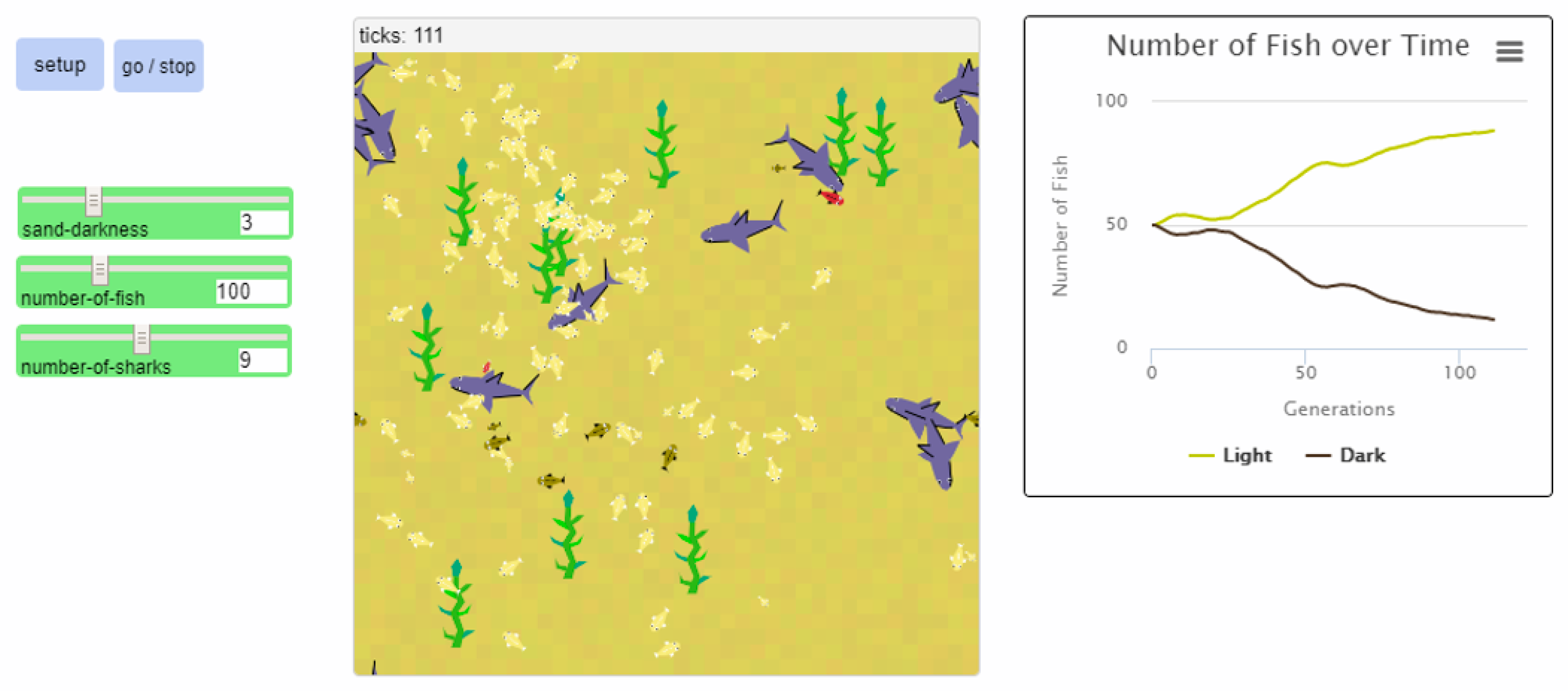


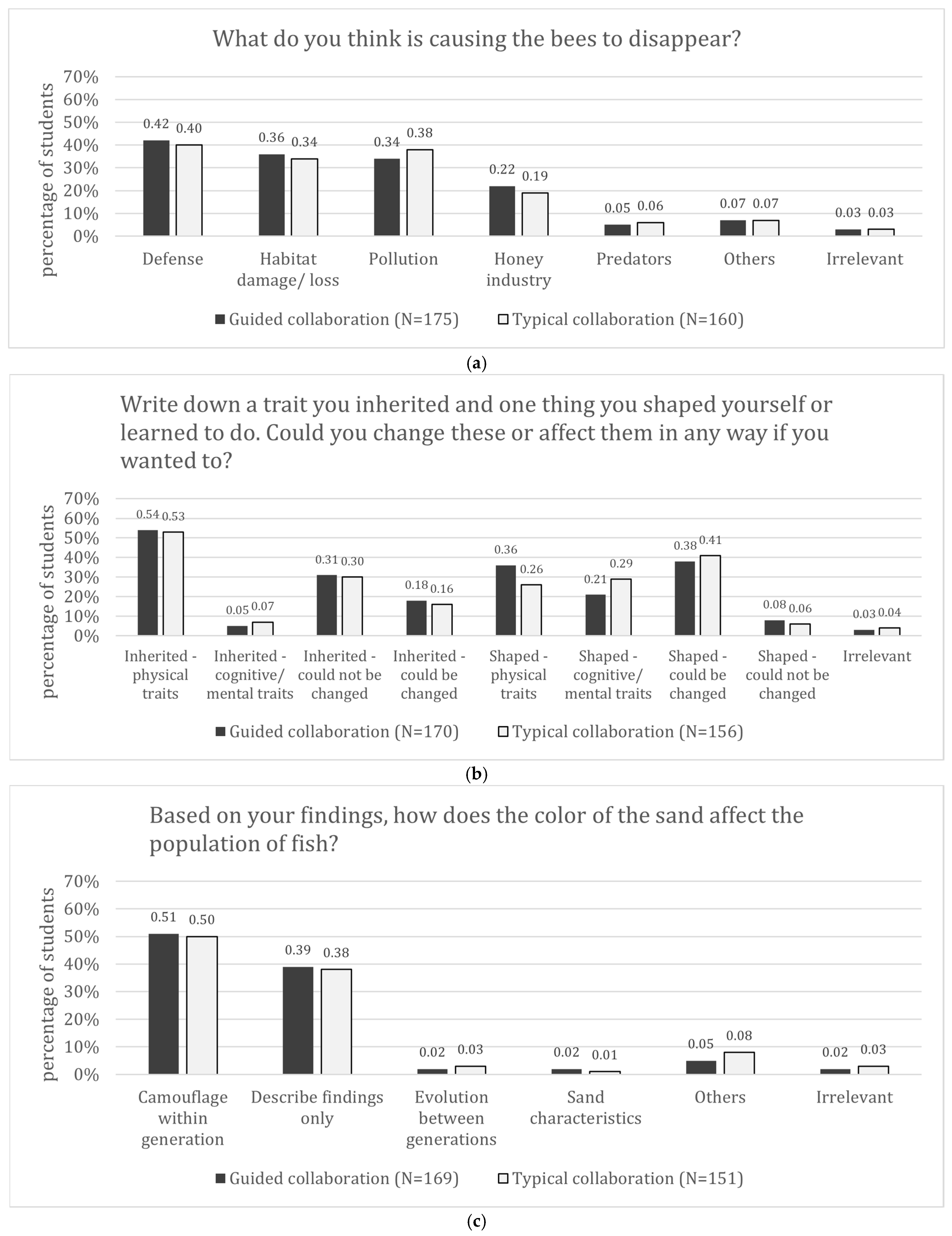
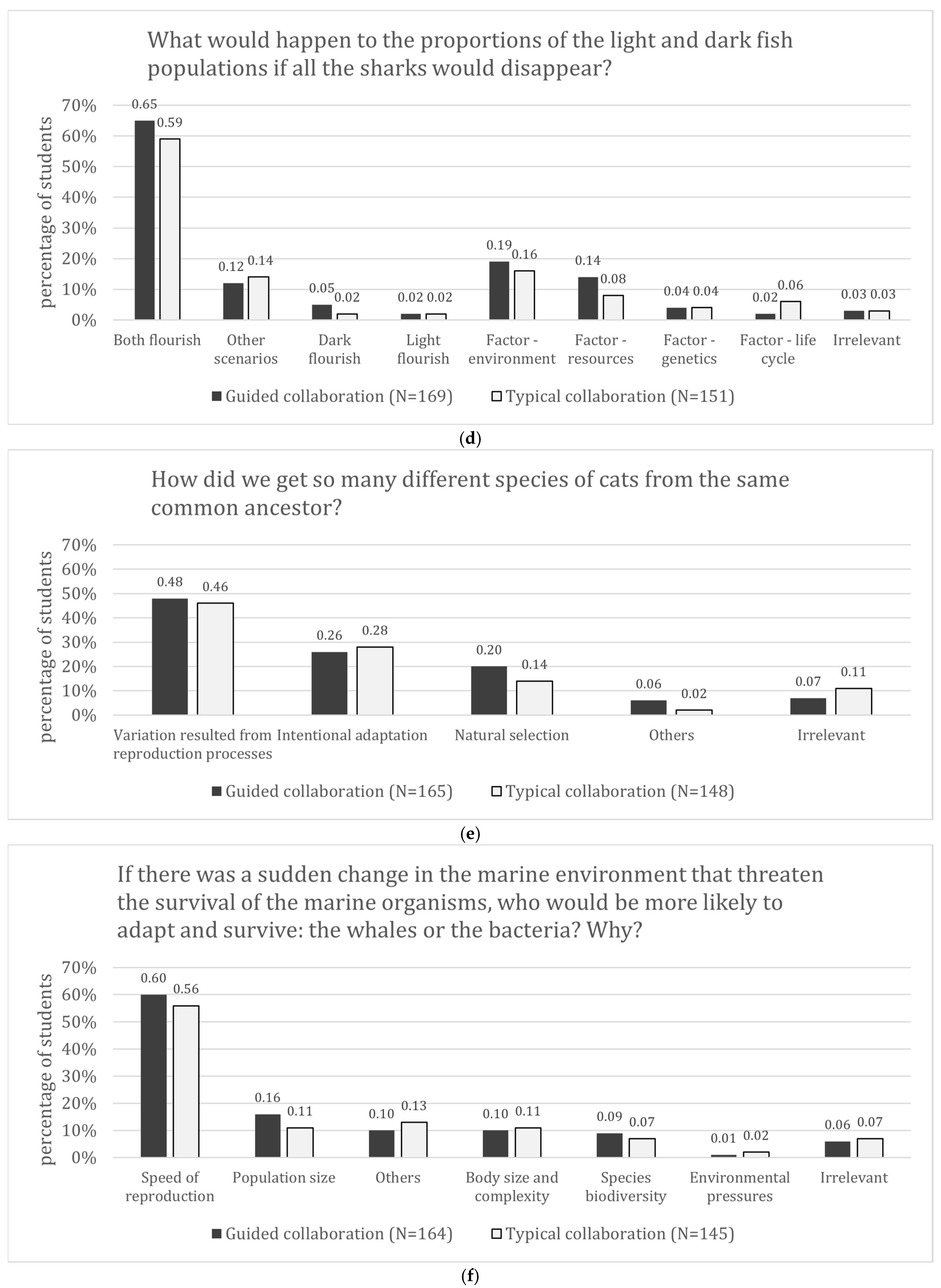
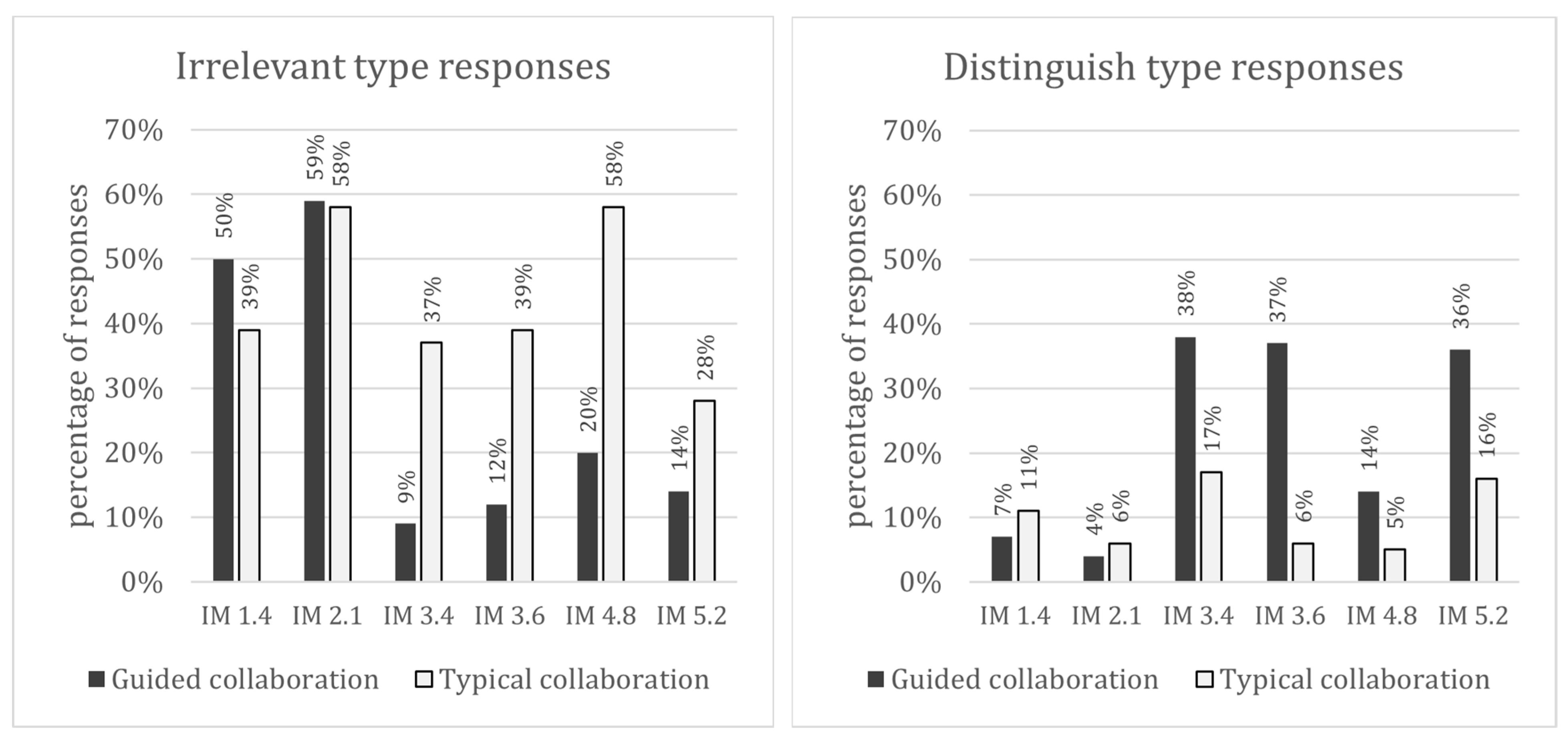
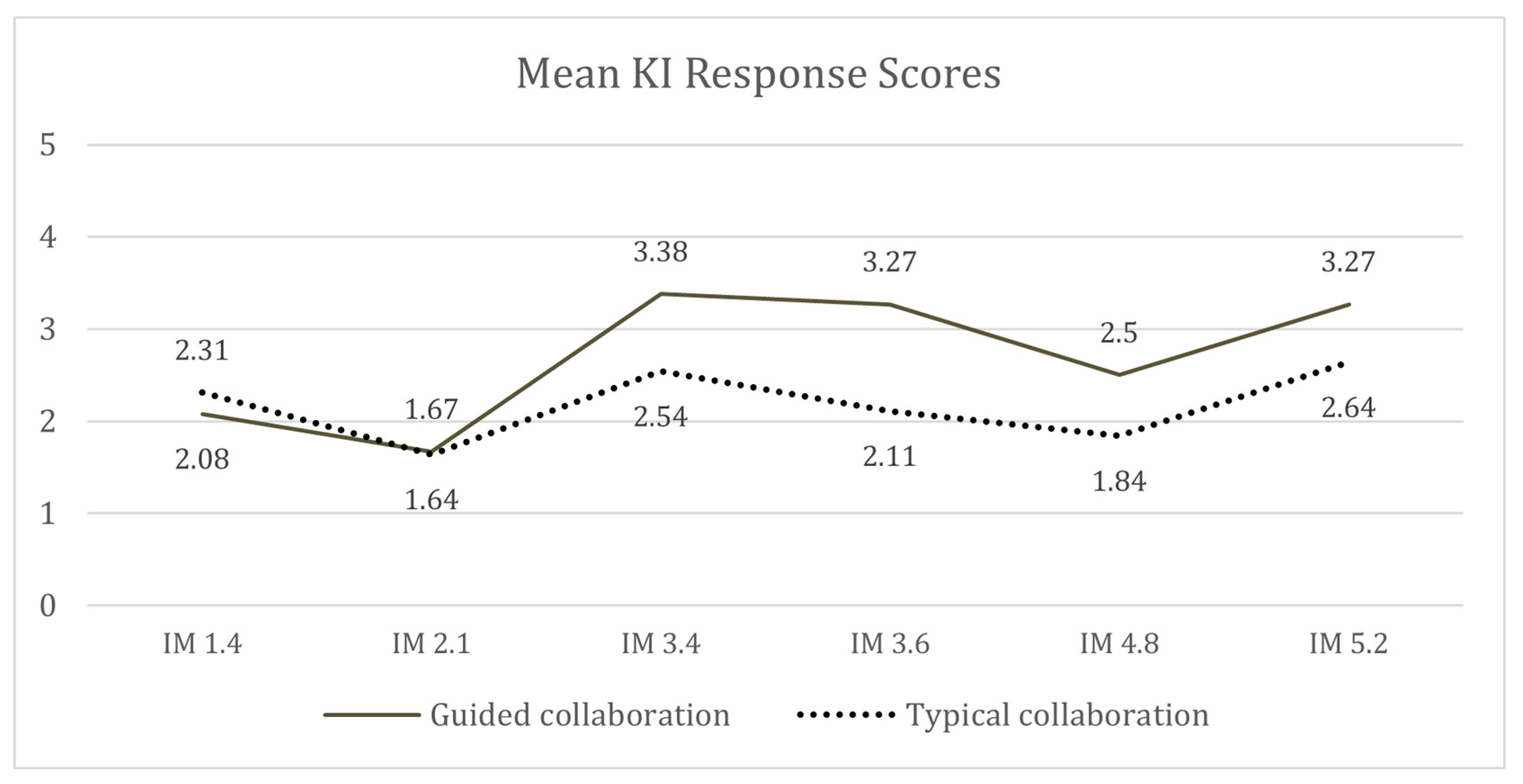
| Level | KI Strategy | Practices for Collaborative KI | Design Principles for Promoting Collaborative KI | Examples of Activities |
|---|---|---|---|---|
| 1 | Elicit ideas | Generate own ideas; Acknowledge peers’ ideas | Make students aware of their own and peers’ ideas. | Brainstorming |
| 2 | Add ideas | Interpret the meaning of peers’ ideas | Help students understand the meaning of their peers’ ideas (are they based on evidence? relevant to the phenomena?) | Seeded discussions, jigsaw |
| 3 | Distinguish ideas | Sort out and analyze the differences between one’s own ideas and peers’ ideas | Help students analyze the relations between the varied ideas: are they complementary or contradictory? What do they share? Which ideas are useful (e.g., evidence-based) and why? | Debate, critique alternatives, compare ideas |
| 4 | Integrate ideas | Synthesize the different ideas into a coherent understanding | Help students synthesize their varied ideas into a coherent explanation. | Create an artifact, connect idea to rationale, reflect on the collaborative process |
| Activity | Topic | Idea Market Dilemma |
|---|---|---|
| 1 | Introduction | Step 1.4—What do you think is causing the bees to disappear? |
| 2 | The genetics of traits: Nature vs. nurture. DNA. Inheritance. Genotype and phenotype. Punnett squares. | Step 2.1—Write down one thing about you that you think you inherited from your parents. Think—could you change this trait or affect it in any way if you wanted to? Explain your ideas. Now, write down one thing you think you shaped yourself or learned to do. Think—could you change this trait or affect it in any way if you wanted to? Explain your ideas. |
| 3 | Case study: Tracking a fish population using a model that demonstrates the process of evolution—the effect of environmental pressures (predation) and the way natural selection favors advantageous traits (having color that enables camouflage). | Step 3.4—What are your conclusions? Based on your findings, how does the color of the sand affect the population of fish? Explain your ideas. |
| 4 | Natural selection and evolution: biotic and abiotic environmental pressures. Mutations. Genetic biodiversity. Species biodiversity. Advantageous traits. Natural selection. | Step 3.6—Suppose for some reason all the sharks in the simulation environment would disappear (perhaps because of some deadly shark disease). What would happen to the proportions of the light and dark fish populations after 50 generations? After 1000 generations? Explain your answer. |
| 5 | The gain and loss of biodiversity: Speed of reproduction. Extinctions. Recovery. | Step 4.8—Using your knowledge of natural selection, explain the graphic above in your own words: How did we get so many different species of cats from the same common ancestor? |
| 6 | The 6th great extinction—Inquiry activity: Human impact. Colony Collapse Disorder | Step 5.2—If there was a sudden change in the marine environment that threatened the survival of the marine organisms, who would be more likely to adapt and survive—the whales or the bacteria? Why? Explain your ideas. |
| Type | KI Score | Explanation | Contribution to Collaborative KI | Example |
|---|---|---|---|---|
| No response | 0 | None | ||
| Irrelevant response | 1 | No relevant ideas contributed to the scientific discussion. Vague response. | Diverting the scientific discussion. |
|
| Praise | 2 | General comment without evaluating the ideas presented in the post. Praise or general suggestion for editing the post. | Not adding new scientific ideas to the discussion. |
|
| Agree | 3 | Agreement or disagreement with the post without explanation. Rephrasing the idea in the post. Suggestion for improving the post. | Strengthening (or not) the current ideas without adding new ones. |
|
| Explain | 4 | Adding personal ideas without explicitly referring to the ideas in the post. Answer to a question posed by another students. | Adding new scientific ideas to the discussion |
|
| Distinguish | 5 | Analyzing, discussing, elaborating, or critiquing the ideas in the post. Comparing personal ideas to the ideas in the post. | Supporting the distinguish KI process |
|
| Criteria | Description | Examples |
|---|---|---|
| Conflicting | The post presents an idea I’m disagreeing with—my idea is an alternative. |
|
| New | The post presents an idea I did not think about, or the post does not present the idea I had. |
|
| Similar | The post presents an idea similar to mine. |
|
| Missing | Could be extended with my ideas. |
|
| Elaborated | The post elaborates the idea I had. |
|
| Editing | The post is edited different than mine or than what is expected |
|
| Others | Different than the other posts, uses unique vocabulary |
|
| Conflicting | The post presents an idea I’m disagreeing with—my idea is an alternative. |
|
| Score | Level | Description |
|---|---|---|
| 0 | No Answer | |
| 1 | Irrelevant | Response is irrelevant or off-task |
| 2 | Non normative | Scientifically non-normative ideas or links between ideas |
| 3 | Partial | Unelaborated links between ideas, or partial idea |
| 4 | Basic | An elaborated scientifically valid link between two ideas |
| 5 | Complex | Elaborate two or more scientifically valid links between ideas |
| Step | 1.4 | 2.1 | 3.4 | 3.6 | 4.8 | 5.2 | ||||||
| Topic | Why Bees Disappear? | Genetic Traits | Color of Sand | Sharks Disappear | Speciation | Extinction | ||||||
| Condition | Gui | Typ | Gui | Typ | Gui | Typ | Gui | Typ | Gui | Typ | Gui | Typ |
| Assigned to condition | 181 | 163 | 181 | 163 | 181 | 163 | 181 | 163 | 181 | 163 | 181 | 163 |
| Posts | ||||||||||||
| Total in discussion | 179 | 174 | 265 | 249 | 173 | 152 | 172 | 154 | 168 | 154 | 166 | 148 |
| Students who published at least 1 post | 175 | 160 | 170 | 156 | 169 | 151 | 169 | 151 | 165 | 148 | 164 | 145 |
| % post writers out of all participants | 97% | 98% | 94% | 96% | 93% | 93% | 93% | 93% | 91% | 91% | 91% | 89% |
| Responses to posts | ||||||||||||
| Total in discussion | 140 | 80 | 82 | 36 | 117 | 41 | 103 | 18 | 98 | 38 | 90 | 25 |
| Students who published at least 1 response | 50 | 35 | 34 | 15 | 90 | 24 | 83 | 11 | 76 | 16 | 70 | 19 |
| % responders out of all participants | 28% | 21% | 19% | 9% | 50% | 15% | 46% | 7% | 42% | 10% | 39% | 12% |
| Step | 1.4 | 2.1 | 3.4 | 3.6 | 4.8 | 5.2 | ||||||
| Topic | Why Bees Disappear? | Genetic Traits | Color of Sand | Sharks Disappear | Speciation | Extinction | ||||||
| Condition | Gui | Typ | Gui | Typ | Gui | Typ | Gui | Typ | Gui | Typ | Gui | Typ |
| Number of responses | 140 | 80 | 82 | 36 | 117 | 41 | 103 | 18 | 98 | 38 | 90 | 25 |
| Praise | 12% | 19% | 21% | 30% | 28% | 15% | 25% | 22% | 38% | 11% | 21% | 12% |
| Agree | 27% | 26% | 16% | 6% | 19% | 24% | 24% | 33% | 28% | 26% | 23% | 44% |
| Explain | 4% | 5% | 0% | 0% | 6% | 7% | 2% | 0% | 0% | 0% | 6% | 0% |
| Distinguish | 7% | 11% | 4% | 6% | 38% | 17% | 37% | 6% | 14% | 5% | 36% | 16% |
| Irrelevant | 50% | 39% | 59% | 58% | 9% | 37% | 12% | 39% | 20% | 58% | 14% | 28% |
| Mean KI score | 2.08 | 2.31 | 1.67 | 1.64 | 3.38 | 2.54 | 3.27 | 2.11 | 2.5 | 1.84 | 3.27 | 2.64 |
| Response Type | Guided Collaboration | Typical Collaboration | t-Test Statistics | ||||||
|---|---|---|---|---|---|---|---|---|---|
| M | SD | n | M | SD | n | Cohen’s d | t | df | |
| Praise | 0.11 | 0.18 | 177 | 0.02 | 0.07 | 160 | 0.66 | 5.73 * | 335 |
| Agree | 0.09 | 0.15 | 177 | 0.04 | 0.12 | 160 | 0.37 | 3.03 * | 335 |
| Explain | 0.01 | 0.05 | 177 | 0.00 | 0.02 | 160 | 0.26 | 2.73 * | 335 |
| Distinguish | 0.12 | 0.18 | 177 | 0.02 | 0.07 | 160 | 0.73 | 6.63 * | 335 |
| Irrelevant | 0.05 | 0.11 | 177 | 0.04 | 0.09 | 160 | 0.10 | 0.96 | 335 |
| All Students | Guided Collaboration | Typical Collaboration | ||||
| n | % of All Responses | n | % of All Guided Responses | n | % of All Typical Responses | |
| Agree | 256 | 79% | 133 | 79% | 123 | 79% |
| Don’t agree | 69 | 21% | 36 | 21% | 33 | 21% |
| Total | 325 | 100% | 169 | 100% | 156 | 100% |
| Reason | Examples | Guided (n = 36) | Typical (n = 32) | ||
| N | % | N | % | ||
| Quality of ideas |
| 28 | 78% | 16 | 50% |
| Other |
| 8 | 22% | 16 | 50% |
| Items | Mean | N | Std. Deviation | Std. Error | RM Cohen’s d |
|---|---|---|---|---|---|
| Pre-Giraffe Crit | 2.64 | 318 | 0.821 | 0.046 | |
| Post-Giraffe Crit | 2.85 * | 318 | 0.896 | 0.050 | 0.204 |
| Pre-Giraffe | 2.63 | 318 | 0.899 | 0.050 | |
| Post-Giraffe | 3.22 * | 318 | 1.088 | 0.061 | 0.561 |
| Pre-Evolution | 2.80 | 318 | 0.888 | 0.050 | |
| Post-Evolution | 3.05 * | 318 | 0.889 | 0.050 | 0.220 |
Disclaimer/Publisher’s Note: The statements, opinions and data contained in all publications are solely those of the individual author(s) and contributor(s) and not of MDPI and/or the editor(s). MDPI and/or the editor(s) disclaim responsibility for any injury to people or property resulting from any ideas, methods, instructions or products referred to in the content. |
© 2025 by the author. Licensee MDPI, Basel, Switzerland. This article is an open access article distributed under the terms and conditions of the Creative Commons Attribution (CC BY) license (https://creativecommons.org/licenses/by/4.0/).
Share and Cite
Kidron, A. Designing Online Tools for Collaborative Knowledge Integration. Educ. Sci. 2025, 15, 1276. https://doi.org/10.3390/educsci15101276
Kidron A. Designing Online Tools for Collaborative Knowledge Integration. Education Sciences. 2025; 15(10):1276. https://doi.org/10.3390/educsci15101276
Chicago/Turabian StyleKidron, Adi. 2025. "Designing Online Tools for Collaborative Knowledge Integration" Education Sciences 15, no. 10: 1276. https://doi.org/10.3390/educsci15101276
APA StyleKidron, A. (2025). Designing Online Tools for Collaborative Knowledge Integration. Education Sciences, 15(10), 1276. https://doi.org/10.3390/educsci15101276






